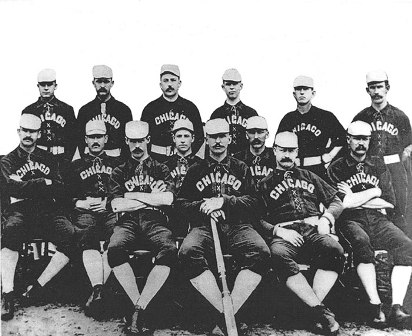Honus Wagner on Integration, 1939
As part of a series of articles on the long overdue need to integrate major league baseball, Wendell Smith of The Pittsburgh Courier interviewed many of baseball’s biggest names. One of the most vocal proponents was Honus Wagner.
The then 65-year-old Pittsburgh Pirates coach told Smith:
“Most of the great Negro players I played against have passed on, but I remember many of them well.
“Rube Foster was one of the greatest pitchers of all time. He was the smartest pitcher I have ever seen in all my years of baseball.
“Another great player was John Henry Lloyd. They called him ‘The Black Wagner’ and I was always anxious to see him play.
“Well, one day I had an opportunity to go see him play. After I saw him I felt honored that they should name such a great ballplayer after me, honored.”
Wagner said the “Homestead Grays had some of the best ballplayers I have ever seen.”
Although he misidentified one of them as “lefty,” Wagner also said of William Oscar Owens, a pitcher and outfielder for the Grays and several other clubs:
“He was a great pitcher and one of the best hitters I have ever seen.”
More recently, Wagner said Oscar Charleston, Jasper “Jap” Washington, Satchel Paige and Josh Gibson “could have made the grade easily had they been accepted.”
Wagner concluded:
“Yes, down through the years, I have seen any number of Negro players who should have been in big league baseball.”
Uniform Criticism, 1923
The Decatur (IL) Herald found the state of baseball uniforms worthy of an editorial in March of 1923:
“Pictures of baseball players in training reveal that the season of 1923 has brought no marked change in the style of uniform. It is quite as baggy and unbecoming as ever.
“Baseball players refer to their costumes as ‘monkey suits,’ a term that is supposed to establish some sort of connection with the cut of the affairs worn by the little animals that pick up the organ grinder’s pennies. However, that may be, no sensible man imagines that his uniform accentuates his good looks. It is purely a utility costume and smartness has no place in it.”
The paper was most concerned about the uniform’s tendency to make players look foolish and appear to be out of shape:
“A collarless blouse with an awkward length sleeve bags at the belt in a way to emphasize abdominal prominence instead of athletic trimness about the loins. Loose knickerbockers gathered at the knee resemble the khaki uniforms of the Spanish-American War period in their voluminousness and wrinkles…A cap fitting close about the head and bringing ears into striking relief is the climatic feature of this make-up.
“Underneath this covering of dirty gray or brown there are doubtless lithe limbs and well developed muscles, but the spectator doesn’t see them. The baseball costume doubtless serves its purpose, it fails lamentably to make the wearer look like an athlete.”
No Women Allowed, 1912
Coming out of the 1912 winter meetings in Chicago, The New York Globe said:
“Nothing doing for suffragettes in the American League! Not even if they march to the meeting. They may be making great progress in their cause, but there will not be any Mrs. Brittons in the Ban Johnson organization.”
“Mrs. Britton” was Helene Hathaway Britton, who became owner of the St. Louis Cardinals after the death of her uncle Stanley Robison.
“A decision was reached that no woman can own a club or even attend an American League meeting. According to the owners it was a good decision, as they did not want to get into the same mess of trouble which the National League has encountered since one of its clubs fell into the hands of a woman. Which shows the American League is constantly being benefitted by the experience of the National.”
The “trouble” referred to tension between Britton and Manager Roger Bresnahan, who she had given a five-year contract before the 1912 season. The two feuded after the team struggled and Britton rejected numerous overtures from Bresnahan to buy the team. She eventually fired the manager and a very public battle ensued. Sinister “Dick” Kinsella, who along with Bill Armour comprised the Cardinals’ scouting staff, resigned claiming Bresnahan was “Not treated right.” Armour remained with the club and a settlement was finally reached when Bresnahan was named manager of the Chicago Cubs.
One American League owner told The Globe:
“I think it will benefit our league to keep the women out of baseball. It is almost impossible to do so, but we must keep them out of baseball. A woman owning a ballclub is about the limit, and the American League made a great move when they decided to bar female magnates. Votes for the women may be alright, and we do not blame them for battling for them, but it would be a terrible thing to have them in baseball as owners. It would mean the ruining of the game.”
Grace Comiskey, who became owner of the Chicago White Sox after the death of her husband John Louis Comiskey in 1939–she was forced to go to court to get control of the club from The First National Bank of Chicago; as trustees of the estate, the bank wanted to sell the team because there was no specific instruction in the will that his widow should take control.
She became the American League’s first woman owner.
The game appears not to have been “ruined” during her tenure.








One Response to “Things I Learned on the Way to Looking Up Other Things #17”